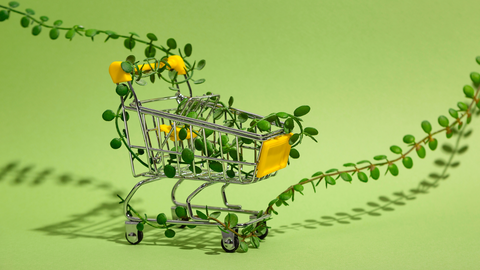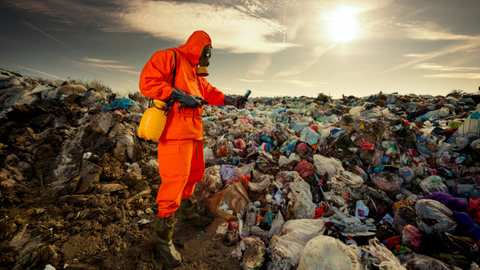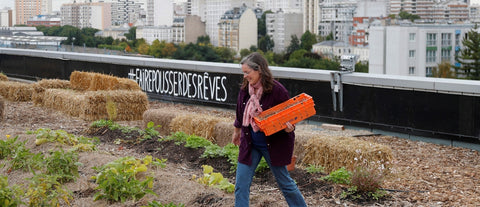Why Count Carbon?
Not sure about you, but as we've gotten older, our feelings about the end-of-year holiday season seem to be getting more and more... complicated. On one hand, we look forward to catching up with family and friends, enjoying some food or perhaps a drink with them, and maybe even exchanging a couple of gifts.
Where things get more complicated is dealing with the reality that many of the behaviors we indulge in at the end of the year have a significant environmental footprint—from flying home, eating and drinking more, to buying more 'stuff' to exchange as gifts. This can lead to a mix of feelings: for us, it's a combination of guilt mixed with a touch of frustration.
It's no secret that we are in the midst of a generation-defining battle against climate change. The actions of every single person on the planet will impact not only the remainder of our own lives but, more significantly, on the lives of those who come after us. The climate crisis is everyone's problem. Although none of us can do everything, all of us can do something about it.
The objective of this blog is to provide some practical tips and advice to help you become a little more 'carbon aware' as you make plans for the end of the year.
Footprint Measurement
The first step in reducing your personal carbon footprint is to understand where it's coming from. For most of us, two types of behaviors have an outsized impact: traveling (especially flying) and your diet. Here are a couple of handy (both free) tools that will help you understand how your personal footprint is being generated.
Clever Carbon | clevercarbon.io | @clever.carbon
Clever Carbon offers a free 2-minute footprint assessment, which asks a few basic questions about how you live, travel, and eat. They also have some nicely presented data that shows the carbon footprint of a number of common foods, commuting options, and at-home activities.
Wren | wren.co | @project_wren
Wren offers a slightly more sophisticated personal assessment tool that includes more questions than the Clever Carbon one. The main difference between Clever Carbon and Wren, however, is that once you complete the assessment with Wren, it offers you the opportunity to sign up for a subscription via which you can offset your personal carbon footprint. For those of you flying home for the holidays, they also have a neat flight offset tool where you can enter your 'from', 'to', and 'cabin class', and it will estimate how many tons of carbon emissions your flight home is likely to generate.
Product & Shopping Measurement
Joro | joro.app
Every time you spend money, you are generating a carbon footprint. In fact, households influence 65% of global emissions based on the things we buy. Joro connects to your credit or debit card to provide real-time insights on how your spending behavior is contributing to your emissions footprint. From there, it can help users develop what they refer to as 'carbon intuition'—that is, an understanding of how our individual behaviors and choices can add up. Joro also offers advice and guides on how you can reduce your personal footprint, and for the unavoidable part of your emissions, it offers a range of offset options.
Finch | choosefinch.com | @choosefinch
Finch's main product is a Google Chrome extension that helps you make smarter choices while shopping on Amazon.com. It takes into account Climate, Water, Human Well-being, Ecological, Waste, and Raw Materials information to make a high-level assumption about product sustainability.
At this stage, it appears that Finch only has coverage of certain product categories, but we understand they are working to add more. It's also worth pointing out that with any tool or service like this that offers a very 'wide' assessment of products, you are more than likely sacrificing quality/accuracy. Without actually having done a Life Cycle Assessment (LCA) for a product, it is impossible for Finch (or anyone else) to know exactly how sustainable a product is. Their approach, therefore, relies on a lot of assumptions and 'averages'.
Reduction > Offsets
The best approach any of us can take to dealing with our personal emissions footprint is to re-evaluate our own behaviors and take actions to act more sustainably. This Urban Leaf blog explains how you might approach this with respect to food-based decisions.
The truth is, however, that even the most environmentally conscious of us will never be able to remove our footprint entirely. Therefore, those of us wanting to achieve a 'Net Zero' carbon footprint will also need to purchase offsets.
Carbon Offsets
Carbon Offsets are financial tools that we can use to indirectly influence how much carbon is emitted into the atmosphere. There are two main types:
- Avoidance offsets: This is where you pay someone to avoid a behavior or action that would reasonably be expected to release GHG into the atmosphere. An example could be paying someone to use a clean-fuel stove to cook dinner instead of a traditional one.
- Removal offsets: This is where you pay someone to remove a unit (generally a ton) of carbon from the atmosphere.
The diagram below from Nori.com summarizes why this difference matters.

Source: Nori.com
Currently, most marketplaces for purchasing carbon credits cater towards business buyers looking to offset larger quantities of carbon. Although some of the tools above do offer inbuilt offsetting options of their own, there are a few important concepts you should be aware of to help you make an informed decision about carbon offsetting.
- Additionality: This describes the incremental benefit of a carbon offset. For example, paying someone not to cut down a tree creates an 'avoidance' credit, but how do we know they were actually going to chop the tree down? The tree that we 'gain' by avoiding chopping one down is not as valuable from a carbon removal perspective as planting a new tree.
- Durability: This describes how long a ton of carbon will be removed from the atmosphere. For instance, we might pay a landowner to rehabilitate a piece of land with natural vegetation to generate carbon offsets, but what happens if the landowner changes their mind in three years or a wildfire burns it down? Some carbon credits (like injecting it into concrete or burying it deep underground) offer high durability, while others are intrinsically shorter-term.
- Measurability: This describes the confidence we can have that carbon is indeed being captured. For industrial projects capturing emissions from a manufacturing plant, it’s fairly easy to measure the volume of carbon being captured. However, for other initiatives, such as Regenerative Agriculture, it is notoriously difficult—often relying on modeling.
In 2021, Urban Leaf pledged to become the World's First Carbon Negative Gardening Company. The approach we've taken to doing this is conceptually exactly the same as what we describe above. Despite its limitations and challenges around measurability, we chose to purchase Regenerative Agriculture offsets because they align most with our mission as a company, which is to help build a better food system.
We hope you've found this overview of Carbon-Conscious Consumer behaviors useful. If you have any questions, feel free to drop us an email at help@geturbanleaf.com or leave a comment below.









There are no comments for this article. Be the first one to leave a message!